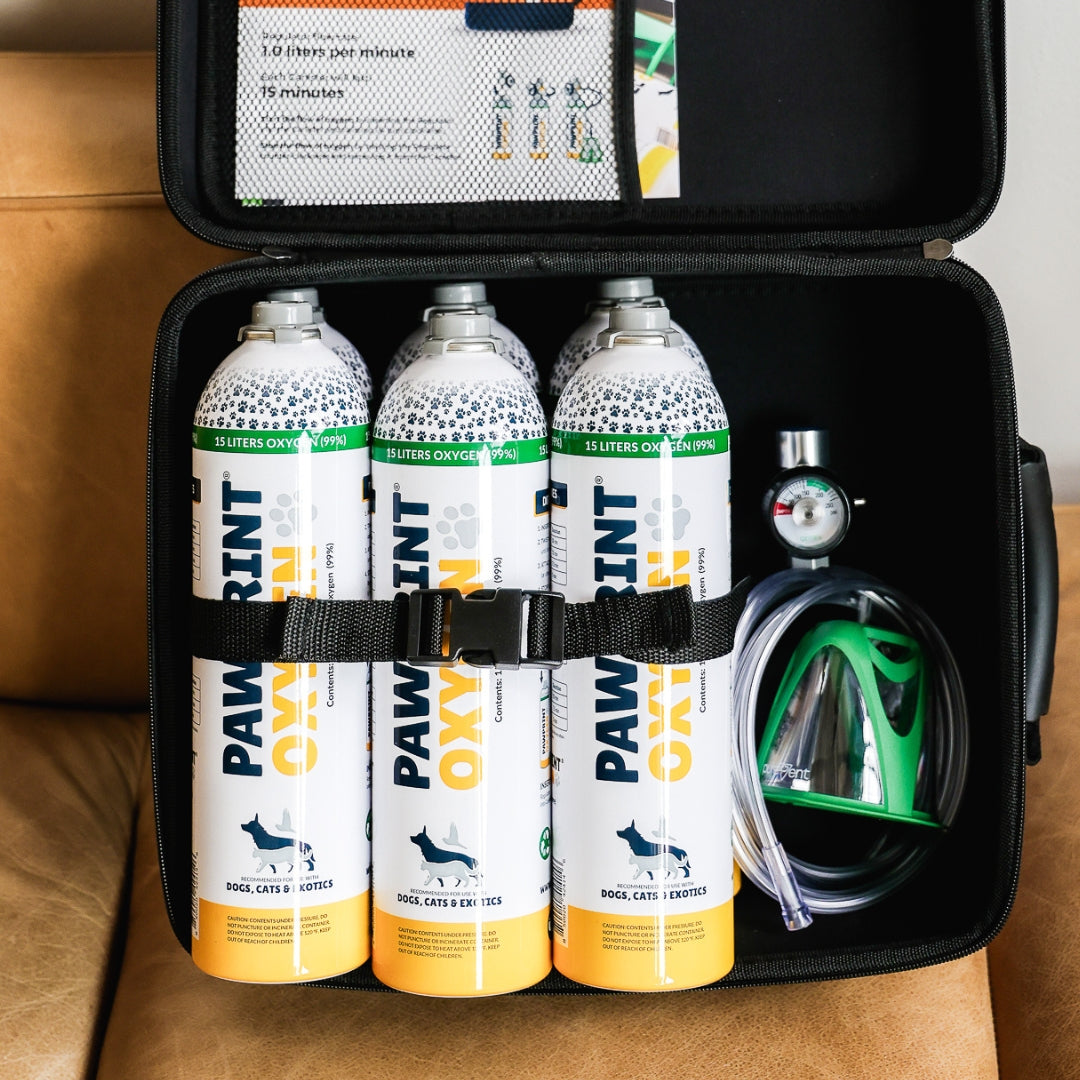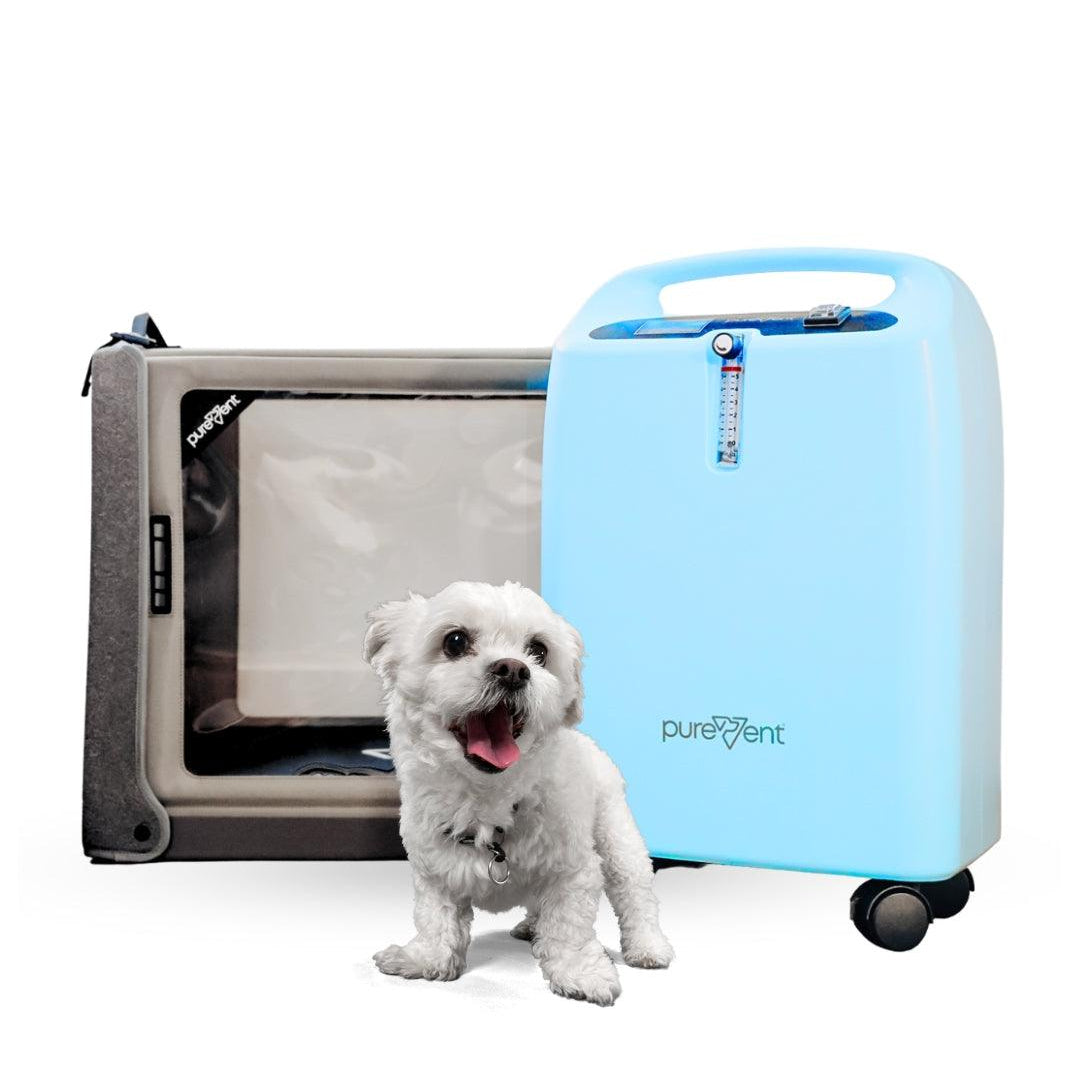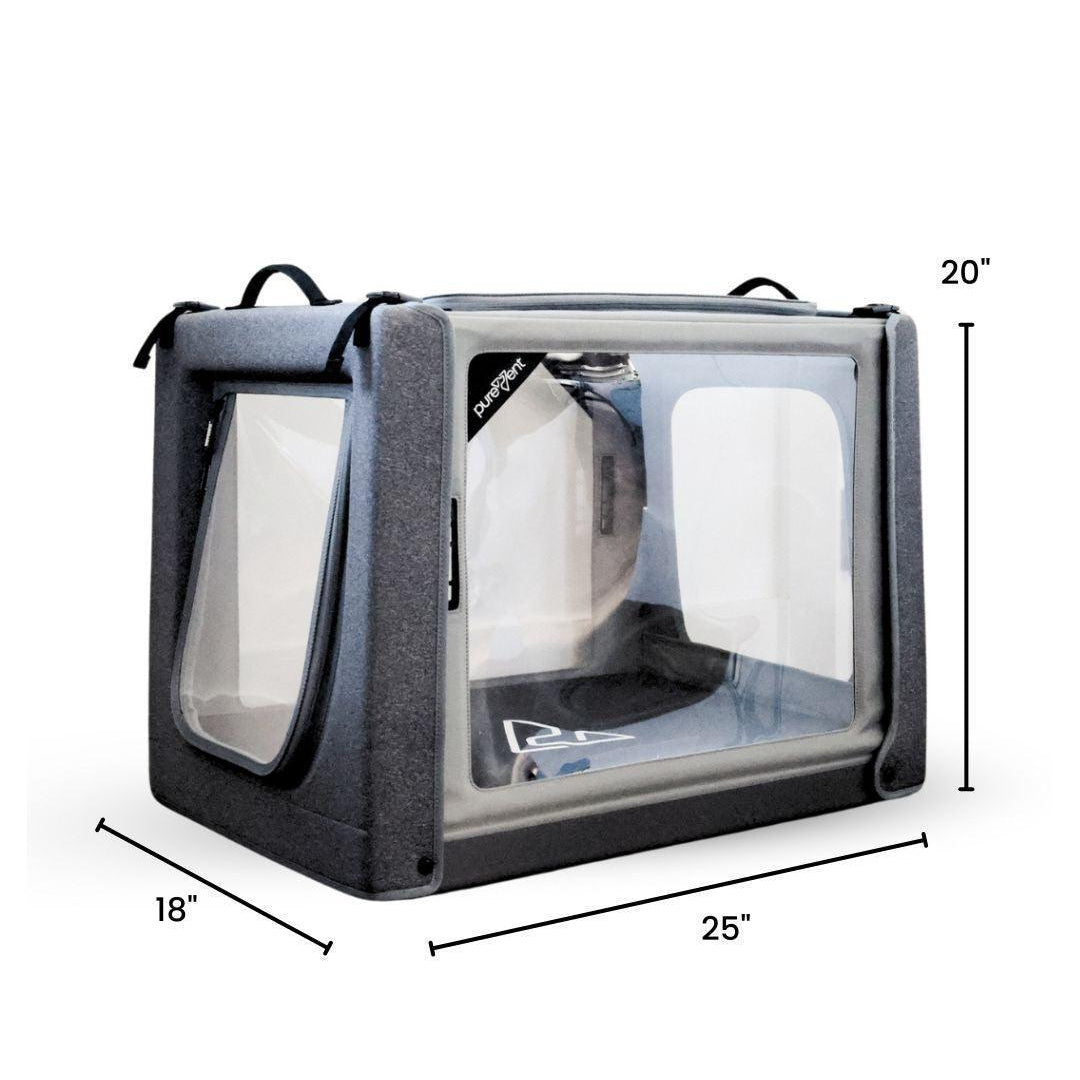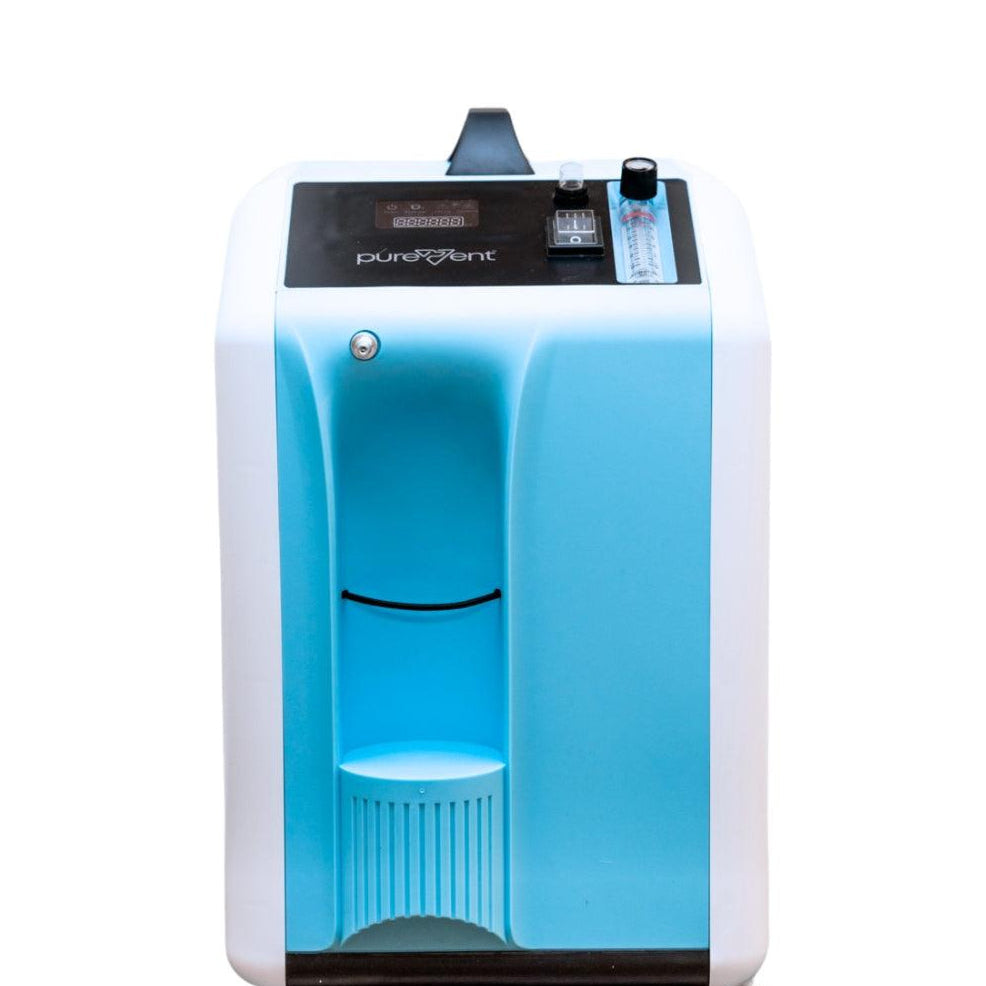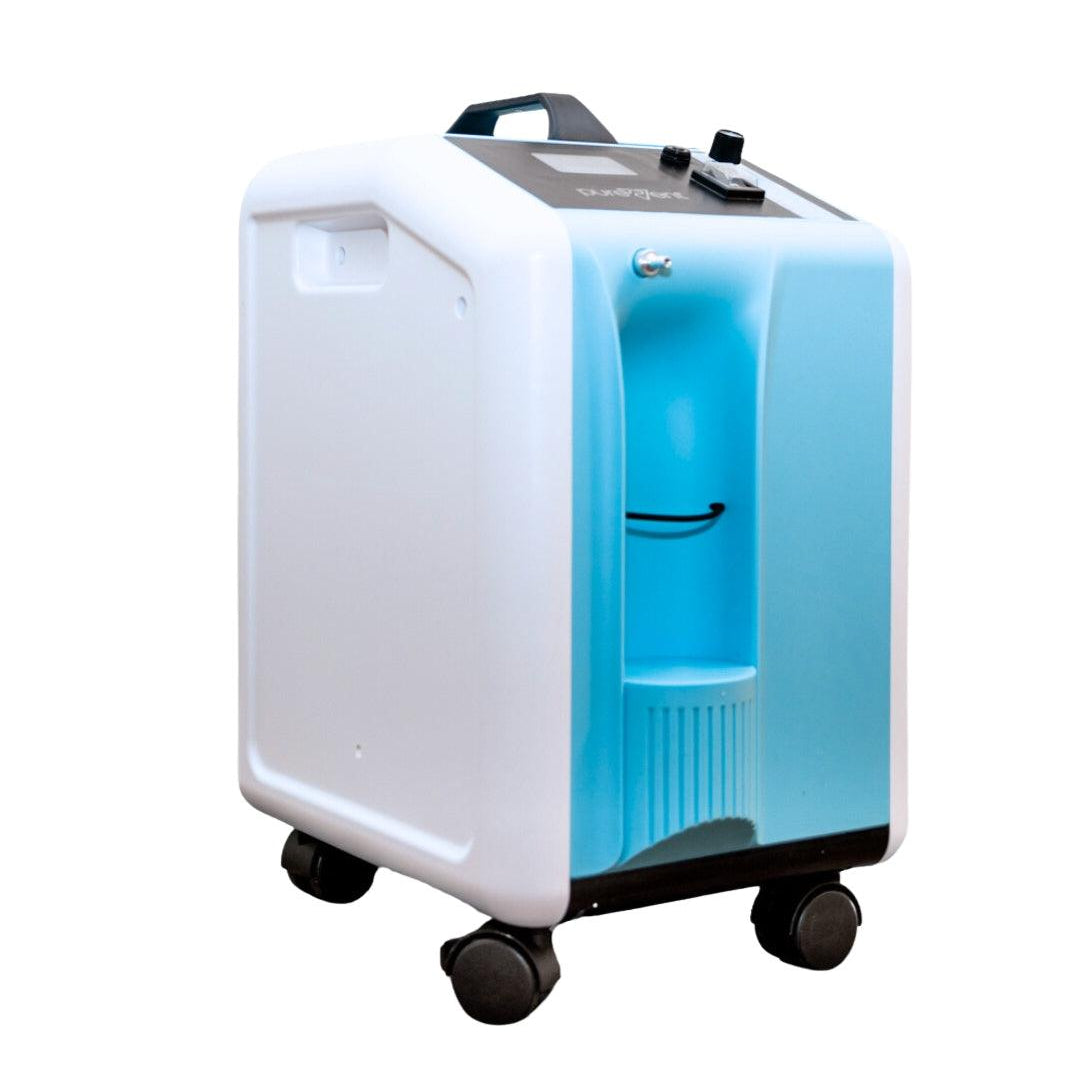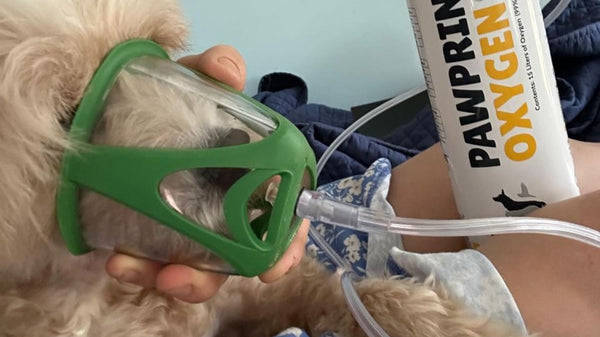Seizures in dogs can be a frightening experience for pet owners, often happening suddenly and with intense physical symptoms. Witnessing a seizure can be alarming, as it may involve uncontrollable shaking, twitching, or even a loss of consciousness. However, understanding the nature of seizures, the symptoms that accompany them, and the potential underlying causes can empower pet owners to respond calmly and effectively.
By recognizing the signs and knowing what to expect, owners can be better prepared to help their pets through these episodes and work closely with veterinarians to manage and treat this complex condition.
Table of Contents
Understanding Seizures in Dogs
A seizure is an abnormal surge of electrical activity in a dog’s brain that temporarily disrupts normal function. This sudden disturbance can affect the brain and body in various ways, from subtle muscle twitches to full-body convulsions, depending on the type and severity of the seizure. Seizures stem from a variety of triggers, including genetic factors, toxins, injuries, and underlying health conditions, making it essential for pet owners to recognize the different types of seizures and respond appropriately.
Types of Seizures in Dogs
Generalized (Grand Mal) Seizures
Generalized seizures, commonly known as grand mal seizures, impact the entire body, causing loss of consciousness, convulsions, and sometimes loss of bladder control. They typically last a few minutes.
Focal Seizures
Affect specific body parts, causing twitching or jerking movements. Dogs often remain aware during these seizures.
Psychomotor Seizures
Present as unusual behaviors like snapping at air or chasing tails. Often mistaken for odd behavior rather than seizures.
Cluster Seizures and Status Epilepticus
Multiple seizures within 24 hours or prolonged seizures lasting over five minutes. Both require immediate veterinary care to prevent complications.
Symptoms of Seizures in Dogs
Recognizing the stages and symptoms of seizures in dogs can help pet owners respond effectively when a seizure occurs. Seizures generally progress through three distinct phases: before the seizure (pre-ictal), during the seizure (ictal), and after the seizure (post-ictal). Each phase comes with unique signs that provide insight into what a dog might be experiencing.
Before a Seizure (Pre-Ictal Phase)
The pre-ictal phase, or aura, is the period just before a seizure when a dog may display unusual behaviors that signal a seizure is coming. Dogs in this phase may seem restless, anxious, or clingy, seeking comfort from their owners. They might also pace, whine, or exhibit signs of confusion, as if something feels "off." Some dogs develop specific pre-ictal behaviors that their owners come to recognize, offering a critical window to prepare for what’s to come.
During a Seizure (Ictal Phase)
The ictal phase is the actual seizure event, where the signs vary widely depending on the seizure type.
- Common Symptoms In generalized seizures, dogs typically lose consciousness and experience dramatic physical symptoms. These may include stiffening of the body, paddling or thrashing of the legs, drooling, and vocalizations such as whining or barking. Some dogs may also snap their jaws or clench their teeth, sometimes biting their tongues. Other common signs include involuntary urination or defecation as muscle control temporarily ceases.
- Subtle Signs in Focal Seizures For focal seizures, the symptoms are usually more localized and subtle. Dogs may exhibit head shaking, facial twitching, or isolated muscle jerks in a specific part of the body. Since dogs may remain conscious during focal seizures, these symptoms can be mistaken for involuntary movements or unusual behavior. Recognizing these subtle signs is key for early diagnosis and effective management.
After a Seizure (Post-Ictal Phase)
Following the seizure, dogs enter the post-ictal phase, where they may seem disoriented, confused, or even temporarily blind. This phase can last anywhere from minutes to hours, depending on the severity of the seizure. During this time, dogs may appear unsteady on their feet, tired, or sluggish, often seeking a quiet place to rest. Temporary behavioral changes, like increased thirst, hunger, or clinginess, are also common as they recover.
By observing the unique characteristics of each seizure phase, pet owners can better understand their dog’s needs during and after these episodes and work closely with their veterinarian to develop an appropriate care plan.
Common Causes of Seizures in Dogs
Seizures in dogs can result from a variety of factors, from genetic predispositions to underlying health issues and external influences. Identifying potential causes can help veterinarians determine the best course of treatment and management.
Genetic Predispositions
Some dog breeds have a higher likelihood of developing epilepsy due to inherited genetic traits. Breeds like Beagles, Border Collies, and Labrador Retrievers are known to be predisposed to epilepsy, which often emerges in young to middle-aged dogs. If a dog’s breed is known for seizure tendencies, regular veterinary check-ups and monitoring for symptoms are essential for early detection and management.
Underlying Health Conditions
Seizures are often secondary to other health issues, some of which are manageable or treatable with the right care. Common health-related causes include:
- Epilepsy Epilepsy, especially idiopathic epilepsy, is one of the most frequent causes of seizures in dogs and is often hereditary. While it can affect dogs of any age, idiopathic epilepsy usually appears between six months and six years old. This form of epilepsy has no identifiable cause, making it more challenging to manage.
- Brain Tumors In older dogs, brain tumors are a potential cause of seizures. Tumors can place pressure on brain tissue, leading to abnormal electrical activity that results in seizures. If a dog suddenly begins having seizures in later life, a brain tumor may be a consideration in the diagnosis.
- Liver or Kidney Disease Metabolic disorders associated with liver or kidney disease can cause toxins to accumulate in the bloodstream, affecting brain function and potentially triggering seizures. When these organs do not filter waste properly, toxic build-up may interfere with the central nervous system, leading to neurological symptoms like seizures.
- Infections Certain infections, including distemper and meningitis, can lead to inflammation in the brain or nervous system, which may provoke seizures. Early treatment of infections can reduce the likelihood of seizures and other neurological complications.
- Toxin Exposure Dogs are susceptible to seizures if they ingest specific toxins. Chocolate, xylitol (found in sugar-free products), certain plants, and household chemicals can all be highly toxic to dogs. Toxins can disrupt the normal function of the brain, leading to seizures and other symptoms of poisoning.
- Trauma Head injuries from accidents, falls, or even rough play can damage the brain and lead to seizures. Dogs who have experienced trauma may develop seizures immediately following the incident or even later as scar tissue forms in the brain.
- Hypoglycemia Low blood sugar, or hypoglycemia, is a frequent cause of seizures in small dog breeds and puppies. Dogs who experience hypoglycemia may exhibit tremors, weakness, and, if untreated, seizures. Managing blood sugar levels with proper diet and regular feeding schedules is crucial, especially for young or small dogs prone to this condition.

Unknown Causes
In many cases, no identifiable cause for a dog’s seizures can be found, a condition referred to as idiopathic epilepsy. Despite extensive testing, some dogs have recurrent seizures without an apparent trigger. While this lack of cause can be frustrating, idiopathic epilepsy is often manageable with medications and monitoring.
Understanding the potential causes of seizures in dogs allows pet owners and veterinarians to take preventive steps where possible and tailor treatment to each dog's needs.
First Aid and Immediate Steps to Take During a Seizure
When a dog experiences a seizure, staying calm and taking appropriate steps can make a significant difference in ensuring their safety and comfort. Here are essential first-aid measures to take when a seizure occurs.
1. Stay Calm
The first and most crucial step is to remain calm. Seizures can be distressing to witness, but dogs are often unaware of what’s happening, so maintaining a level head prevents additional stress. Your calm presence can also help keep other pets or family members composed, creating a more stable environment for when the seizure subsides.
2. Ensure Safety
During a seizure, ensure your dog's safety by following these guidelines:
- Remove nearby objects that could cause harm. Place soft cushions around the dog if on elevated surfaces.
- Avoid holding the dog or putting hands near its mouth to prevent accidental injury.
3. Timing the Seizure
Note the start time and duration of the seizure. Seizures over five minutes pose serious risks, so prompt timing helps decide if emergency care is needed. If a seizure lasts beyond five minutes or if seizures occur in clusters, seek immediate veterinary attention.
4. After the Seizure Ends
After a seizure, dogs enter the post-ictal phase, often feeling disoriented or exhausted. Support them by:
- Providing a quiet, comfortable space, free from noise or disturbances.
- Monitoring for unusual behaviors like unsteady walking or confusion. If additional seizures occur or they don’t recover normally, contact a vet promptly.
When to Seek Veterinary Care
Knowing when to seek veterinary care during or after a seizure can make a critical difference in a dog's outcome, especially in more severe cases. While some seizures may be brief and self-limiting, certain signs indicate an emergency requiring immediate attention.
Signs of a Medical Emergency
- Seizure Lasting More Than 5 Minutes (Status Epilepticus) A seizure that continues for more than five minutes is known as status epilepticus, a condition that can lead to severe complications, including brain damage, organ failure, and even death if left untreated. In these cases, immediate veterinary intervention is essential to stop the seizure and stabilize the dog.
- Multiple Seizures in a Short Time (Cluster Seizures) When a dog experiences multiple seizures within a short period—referred to as cluster seizures—urgent care is needed. Cluster seizures put significant strain on the brain and body, increasing the risk of overheating, exhaustion, and other complications. Seeking prompt veterinary support can help prevent further health risks.
- Prolonged Disorientation or Signs of Injury Post-Seizure After a seizure, most dogs recover within a few minutes to an hour. However, if your dog seems unusually disoriented, has trouble regaining balance, or shows signs of injury or extreme fatigue, it’s essential to consult a veterinarian. Prolonged disorientation could suggest complications that require medical evaluation.
Importance of Immediate Veterinary Care
Prolonged or clustered seizures are considered emergencies because they place an intense physiological burden on a dog’s body, potentially causing permanent harm if not treated. In these cases, veterinarians can administer medications to control the seizure activity and prevent further episodes.
Quick response not only stabilizes the dog but also allows the vet to assess underlying causes and recommend a long-term management plan. Seeking prompt veterinary attention for these emergency signs is key to supporting your dog’s health and well-being through seizures.
Diagnostic Process for Seizures in Dogs
When a dog experiences seizures, a thorough diagnostic process can help identify underlying causes and guide treatment options. Veterinarians use a combination of physical examinations and diagnostic tests to determine potential triggers and develop a tailored care plan.
Initial Examination
The diagnostic process begins with a comprehensive physical and neurological examination. During this assessment, the veterinarian will review the dog's medical history, including information on previous seizures, any known genetic predispositions, and recent environmental exposures. This exam helps the vet assess the dog’s overall health and neurological function, identifying any immediate concerns that could be contributing to the seizures.
Diagnostic Tests
To gain deeper insights into potential causes, several diagnostic tests may be recommended:
- Blood Work Blood tests are often the first step in diagnosing seizures, as they can reveal metabolic imbalances, infections, or organ dysfunction that may be contributing to the condition. For instance, liver or kidney issues, abnormal glucose levels, or electrolyte imbalances can all lead to seizures. Blood work provides essential information to rule out or address underlying metabolic causes.
- Imaging (MRI or CT scan) Advanced imaging, such as MRI or CT scans, may be necessary, particularly if a structural issue like a brain tumor or head injury is suspected. These scans provide detailed views of the brain and allow veterinarians to detect tumors, lesions, or other abnormalities that could be triggering seizure activity. Imaging is especially common in older dogs with new seizure onset, as brain tumors are more prevalent in this age group.
- Other Tests Additional tests, such as urinalysis, spinal taps, or toxin screenings, may be performed based on specific suspicions. A urinalysis can help identify systemic issues, while a spinal tap may reveal infections or inflammatory diseases affecting the central nervous system. If toxin exposure is suspected, blood or urine tests may identify harmful substances like xylitol, lead, or pesticides that could be causing seizures.
This comprehensive diagnostic approach allows veterinarians to pinpoint possible causes of seizures in dogs, helping to determine the best course of treatment and management for each individual case.
Treatment and Management of Seizures in Dogs
Effectively managing seizures in dogs involves a combination of medication, lifestyle adjustments, and sometimes alternative therapies. Treatment plans are tailored to each dog’s needs, aiming to reduce seizure frequency, severity, and overall impact on the dog’s quality of life.
Medication Options
Anti-seizure medications are typically the first line of defense in managing recurrent seizures. Commonly prescribed medications include:
- Phenobarbital Phenobarbital is one of the most widely used anti-seizure medications in veterinary medicine. It works by calming abnormal electrical activity in the brain and is generally effective at controlling seizures. Regular bloodwork is required to monitor liver function and ensure the medication stays within therapeutic levels.
- Potassium Bromide Another commonly used medication, potassium bromide, is often prescribed alongside or as an alternative to phenobarbital, especially if there are concerns about liver health. Potassium bromide is slow acting but effective and is particularly beneficial for dogs who do not tolerate phenobarbital well.
- Levetiracetam (Keppra) Levetiracetam is a newer anti-seizure medication with fewer side effects than traditional options, making it an attractive choice for dogs sensitive to other drugs. It can be used alone or in combination with other medications to improve seizure control.
Each medication has specific benefits and potential side effects, so regular check-ups and monitoring are essential to finding the right balance and making any necessary adjustments over time.
What is a seizure?
A seizure is a temporary episode of abnormal electrical activity in the brain that causes a variety of symptoms, like loss of consciousness, uncontrollable movements, and difficulty breathing.
How do I know if my pet is having a seizure?
Recognizing a seizure can be challenging, especially if you've never seen one before. Some signs that may indicate your pet is having a seizure include uncontrollable muscle movements, loss of consciousness, collapse, excessive drooling, loss of bladder or bowel control, and repeated movements or actions.
What should I avoid doing if my pet is having a seizure?
It's essential to avoid certain actions to ensure both your pet's safety and your own. Here are a few things NOT to do if your pet is seizing: Do not put your hands near your pet's mouth. Do not try to restrain your pet or move them unnecessarily. Do not give them food or medications until they are conscious. Do not shout or make loud noises. Do not panic.
Lifestyle and Routine Management
Managing a dog’s environment and daily routine can also help reduce seizure frequency and improve overall well-being.
- Avoiding Known Seizure Triggers Some dogs have identifiable seizure triggers, such as certain foods, stress, or specific environmental factors. Keeping a journal of your dog’s seizures and taking note of any potential triggers can help reduce exposure to these factors and minimize seizure occurrences.
- Monitoring for Medication Side Effects Anti-seizure medications can come with side effects, ranging from mild drowsiness to more serious liver or kidney concerns. Regular veterinary check-ups, bloodwork, and close monitoring at home are essential for detecting and managing any adverse effects early.
Alternative Therapies to Treat Seizures in Dogs
In addition to traditional medications, some dog owners explore alternative therapies to support seizure management. These options may be used alongside prescribed treatments with a veterinarian’s approval.
- Dietary Adjustments and Supplements Diets rich in medium-chain triglycerides (MCTs), commonly found in some prescription diets, may help reduce seizure activity. Additionally, supplements like omega-3 fatty acids and certain antioxidants are sometimes used to support brain health and reduce inflammation.
- Acupuncture Acupuncture is gaining popularity as a complementary therapy for managing seizures. By stimulating specific points on the body, acupuncture may help regulate nervous system function and reduce stress, potentially decreasing seizure frequency.
- CBD (Cannabidiol) CBD is an increasingly researched supplement for managing seizures in dogs. Though results vary, some dogs experience a reduction in seizure frequency with CBD supplementation. However, it’s essential to consult a veterinarian before starting CBD, as it may interact with other medications.
Together, medication, lifestyle adjustments, and alternative therapies provide a comprehensive approach to managing seizures in dogs, offering hope for improved quality of life and seizure control.

Living with a Dog Prone to Seizures
Living with a dog that experiences seizures require some adjustments and preparation to ensure their safety and well-being. With the right strategies, pet owners can create a supportive environment that helps both the dog, and their family manage this condition effectively.
Creating a Safe Environment
To protect a dog during a seizure, it’s essential to make the home as seizure friendly as possible:
- Clear Spaces for Safety: Keep areas of the home free from sharp or hard objects that could injure your dog during a seizure. Ensure they have plenty of room to move without bumping into furniture or other obstacles.
- Use Soft Bedding: Providing a soft, comfortable place for your dog to rest can help prevent injury during or after a seizure. Cushioned bedding is ideal, especially in common resting spots.
- Consider Flooring: Non-slip rugs or mats can help prevent slipping, especially if your dog is prone to disorientation or weakness following seizures.
Portable, Low-Pressure 15L Oxygen Canisters
Designed with your pet's safety and comfort in mind, our lightweight oxygen canisters provide a safe, low-pressure oxygen source perfect for dogs prone to seizures, even on the go. Each canister contains 15L of pure oxygen, and our rescue kits come with either 3 or 6 canisters, tailored to suit your dog’s needs based on their weight.
In moments when every second counts, our portable oxygen canisters offer peace of mind, providing vital support when your dog needs it most. Easy to carry and use, these canisters allow you to manage your dog’s seizures with confidence, whether you're at home or on the move. With rescue kits designed for different sizes and needs, you can be prepared to help your dog breathe easier, no matter the situation.
Tracking Seizures in Dogs
Maintaining a record of your dog’s seizures can provide valuable insights into their condition and assist veterinarians in adjusting treatments. Tracking seizure activity allows you to monitor patterns and potential triggers, which can help in managing the frequency of episodes.
- Seizure Journal or App: Use a journal or a smartphone app to log each seizure’s date, time, duration, and any notable behaviors before, during, or after the episode. Record any suspected triggers, such as food, stress, or environmental changes, to identify patterns.
- Share Updates with Your Vet: Regularly sharing seizure logs with your veterinarian helps them assess the effectiveness of treatments and make any necessary adjustments to your dog’s care plan.
Preparing for Future Seizures
Having a seizure kit ready can help you stay prepared and provide calm, supportive care when a seizure occurs. Your kit might include:
- Timer: Keep a timer or stopwatch (often a smartphone suffices) handy to track the duration of each seizure. This information can be crucial if the seizure exceeds five minutes, as it may require emergency intervention.
- Emergency Vet Contact Information: Store your veterinarian’s contact details and the nearest 24-hour emergency vet number in an easily accessible place. In case of a prolonged or clustered seizure, prompt contact with a professional is vital.
- Calming Space: Set up a quiet, comfortable area in your home where your dog can safely rest after a seizure. Avoid loud noises or bright lights, as dogs can be especially sensitive following an episode.
- Portable Oxygen Kit: To assist in a faster recovery after a seizure, having a source of supplemental oxygen can help provide much needed therapy when the dog’s body is experiencing effects of oxygen deprivation. Additionally, in the case of an emergency, the kit can be used in the car during transport to the ER.
Living with a dog prone to seizures involves proactive planning, a structured environment, and a supportive approach to tracking and managing their condition. With these measures, pet owners can help their dogs feel safe and cared for, minimizing the impact of seizures on their quality of life.
When Oxygen Therapy Might Be Useful for Treating Seizures in Dogs
For some dogs prone to seizures, supplementary oxygen therapy can provide critical support, especially if they experience respiratory distress during or after an episode. Oxygen therapy can help stabilize breathing and improve oxygen levels in the brain, aiding recovery and minimizing potential complications from oxygen deprivation.
Role of Oxygen Therapy
During or immediately following a seizure, some dogs may have trouble breathing or decreased oxygenation, which can exacerbate stress and slow recovery. Oxygen therapy provides a boost of concentrated oxygen that helps maintain normal respiratory function and supports brain health, reducing the likelihood of prolonged disorientation or secondary complications. Dogs with underlying respiratory issues, heart conditions, or neurological disorders may especially benefit from this added support, as their bodies may struggle more with oxygen regulation after a seizure.
Using Portable Oxygen
Having portable oxygen readily available offers several advantages for dogs with a history of seizures, particularly in situations where emergency intervention might be needed:
- Convenience and Accessibility: Portable oxygen kits, like those from Pawprint Oxygen, allow pet owners to administer oxygen at home or in transit, which is particularly valuable if a dog has a prolonged or severe seizure that requires stabilization before reaching a veterinary facility.
- Emergency Preparedness: For dogs prone to respiratory challenges or conditions like congestive heart failure, portable oxygen provides peace of mind, as it enables quick intervention should they experience a seizure with complications. Oxygen therapy helps reduce respiratory strain and may improve recovery outcomes if transport to a hospital becomes necessary.
By including oxygen therapy as part of a comprehensive seizure management plan, pet owners can help their dogs receive immediate support during or after seizures, enhancing both safety and comfort in critical moments.
Providing Peace of Mind
Understanding seizures in dogs and knowing how to respond effectively is essential for any pet owner dealing with this condition. Recognizing the symptoms, knowing when to seek veterinary care, and understanding the treatment options available can make a significant difference in managing seizures and ensuring your dog’s well-being.
Early diagnosis and treatment play a critical role in improving a dog’s quality of life. By working closely with your veterinarian, you can develop a personalized plan that addresses your dog’s specific needs, whether through medication, lifestyle adjustments, or supplementary therapies like oxygen support.
Staying proactive in your dog’s health management and consulting a veterinarian with any concerns will help you feel prepared and capable of providing the best possible care. With the right approach, you can offer your dog a safer, more comfortable life, giving both you and your dog peace of mind as you navigate this journey together.







